Did you know that Liechtenstein, a small sovereign state between Switzerland and Austria, is home to an astonishing array of sacred natural sites and biodiversity? Despite its size, Liechtenstein boasts a diverse landscape, including the Alpine Rhine and Rätikon massif, which contribute to its rich ecosystem. This remarkable biodiversity is the result of unique geographical features, such as an altitude gradient and a transition zone between oceanic and continental climates. As a result, Liechtenstein plays a crucial role in environmental conservation, striving to protect its fragile ecosystems and preserve its sacred natural sites for future generations.
Key Takeaways:
- Liechtenstein is a small sovereign state known for its diverse landscape and rich biodiversity.
- The country’s unique geographical features contribute to its remarkable ecosystem.
- Liechtenstein is committed to environmental conservation and the protection of its sacred natural sites.
- Challenges such as infrastructure development and intensification of agriculture threaten biodiversity in Liechtenstein.
- Through the implementation of various measures, Liechtenstein aims to address these challenges and promote sustainability.
Geographic Regions and Climate
Liechtenstein, located between Switzerland and Austria, is known for its diverse geography and unique climate. The country can be divided into three distinct physical regions, each with its own characteristics and features.
Rhine Valley Plain
The Rhine Valley plain is located in the western part of Liechtenstein and is characterized by its flat terrain. This region is home to the Alpine Rhine, a significant river that flows through Liechtenstein and provides a vital water source.
Rhine Valley Slopes
The Rhine Valley slopes extend from the plain up towards the mountains. This region features gentle slopes and is known for its vineyards and agricultural activities. The slopes offer beautiful views of the surrounding landscapes and contribute to the country’s picturesque scenery.
Mountain Region
The mountain region is located in the eastern part of Liechtenstein and is dominated by the Rätikon massif. This mountain range is a part of the larger Alps and provides stunning landscapes, hiking trails, and recreational activities. The Rätikon massif is particularly renowned among mountaineers and nature enthusiasts.
The diverse geography of Liechtenstein, ranging from the Rhine Valley to the mountains, creates a multitude of microclimates and habitats. The altitude gradient, ranging from 450 to 2,600 meters above sea level, contributes to the country’s rich flora and fauna. The varying elevations also offer different levels of exposure, which further contributes to the diversity of the landscape.
Liechtenstein’s climate is classified as a transition zone climate, influenced by both oceanic and continental climates. This unique combination creates moderate temperatures throughout the year. In the capital city of Vaduz, Liechtenstein experiences approximately 1,000 mm of precipitation annually. The transition zone climate, along with the geography of the country, provides favorable conditions for various plant and animal species to thrive.
Liechtenstein Geographic Regions and Features
| Region |
Characteristics |
| Rhine Valley plain |
Flat terrain, Alpine Rhine |
| Rhine Valley slopes |
Gentle slopes, vineyards |
| Mountain region |
Rätikon massif, hiking trails |
Biodiversity in Liechtenstein
Liechtenstein, located in the Alpine Rhine Valley, is home to a diverse array of flora and fauna. This rich biodiversity is largely a result of the overlap of the Eastern and Western Alps in the region.
The fauna in Liechtenstein is characterized by a variety of species, including mammals such as chamois, red deer, and roe deer. The avian population is also abundant, with species like the black grouse, hazel grouse, and red-backed shrike making their homes in the country’s forests and meadows. Additionally, Liechtenstein is a habitat for various reptiles, amphibians, and insects.
The flora of Liechtenstein is equally impressive, boasting a wide range of plant species. Alpine meadows are filled with vibrant wildflowers, including edelweiss, gentian, and alpine aster. Forests in Liechtenstein are characterized by a mixture of deciduous and coniferous trees such as beech, spruce, and fir.
To identify and protect threatened species, Liechtenstein maintains its own Red Lists. These lists assess the threat level to animal and plant species based on the criteria set by the International Union for Conservation of Nature (IUCN). By closely monitoring these lists, Liechtenstein can prioritize conservation efforts for the species that need it most.
The country has implemented various measures to conserve forest biodiversity. Near-natural silviculture practices are employed to maintain a healthy balance between commercial forestry and the preservation of habitats. Additionally, forest reserves and the protection of small habitats help to safeguard the flora and fauna that rely on these ecosystems.
One notable aspect of forest conservation in Liechtenstein is the prohibition of pesticide and fertilizer use. This policy helps to maintain the integrity of the forest ecosystem by preventing chemical contamination and promoting natural ecological processes.
“The diverse fauna and flora in Liechtenstein are a testament to the country’s commitment to biodiversity conservation. By implementing red lists, conservation measures, and sustainable practices, Liechtenstein ensures the protection of its natural heritage.”
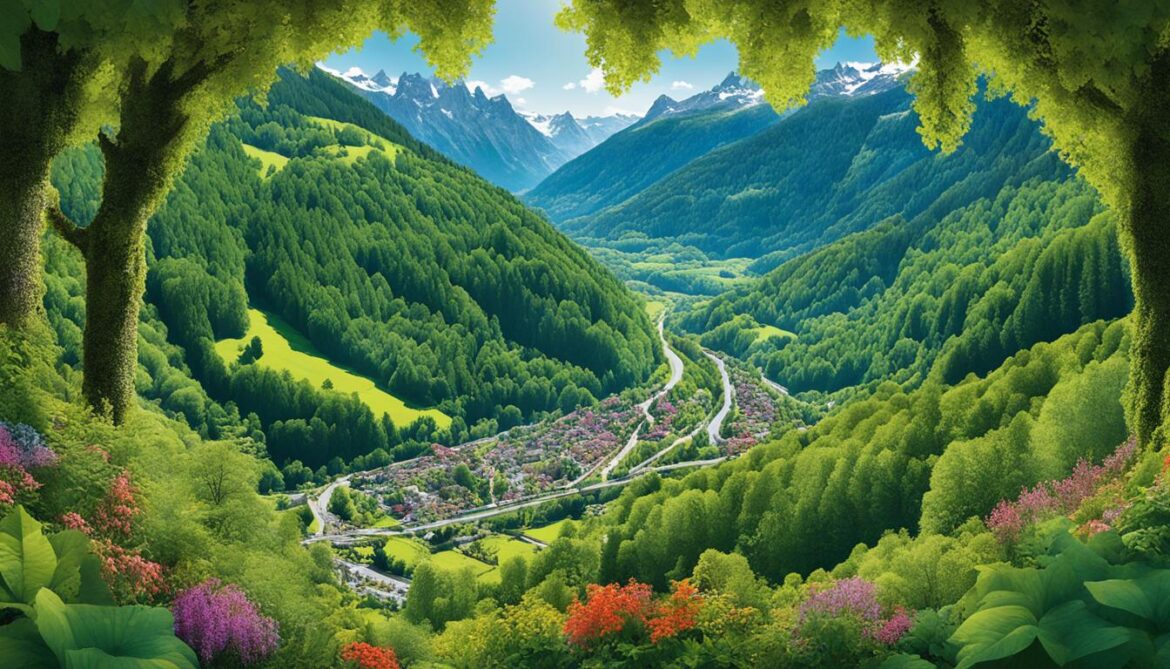
| Threatened Fauna |
Threatened Flora |
| Chamois |
Edelweiss |
| Red deer |
Gentian |
| Roe deer |
Alpine aster |
| Black grouse |
|
| Hazel grouse |
|
| Red-backed shrike |
|
Protection Areas in Liechtenstein
Liechtenstein boasts a comprehensive network of protection areas designed to safeguard its unique natural heritage. These areas categorize into four distinct types: nature protection, forest protection, plant protection, and landscape protection. Each category serves a specific purpose, contributing to the overall conservation efforts in the country.
Nature protection areas occupy a prominent role in the preservation of Liechtenstein’s biodiversity. With their strict regulations, these areas provide habitats for numerous threatened animal and plant species. Currently, Liechtenstein has nine designated nature protection areas, primarily dedicated to safeguarding swamps and waters. Among these areas, the Ruggeller Riet stands as the largest nature protection area. This internationally significant wetland serves as a breeding ground for various bird species, contributing to their conservation efforts.
| Protection Area |
Description |
| Nature Protection Area |
Dedicated to conserving habitats for threatened plant and animal species |
| Forest Protection Areas |
Focused on preserving the ecological integrity of forest ecosystems |
| Plant Protection Area |
Specifically reserved for the protection of rare and endangered plant species |
| Landscape Protection Area |
Aimed at preserving the scenic beauty and cultural significance of landscapes |
Forest protection areas dedicate their efforts towards maintaining the ecological balance of forest ecosystems. By implementing sustainable forestry practices, these areas support the conservation of forest biodiversity and the protection of threatened species.
Plant protection areas play a vital role in preserving rare and endangered plant species. These areas provide a safe haven for the maintenance and restoration of plant genetic diversity, ensuring the survival of vital ecological components in Liechtenstein.
The final category, landscape protection areas, emphasizes the preservation of scenic beauty and cultural landscapes. These areas strive to protect the visual appeal and cultural heritage of significant geographical locations throughout the country.
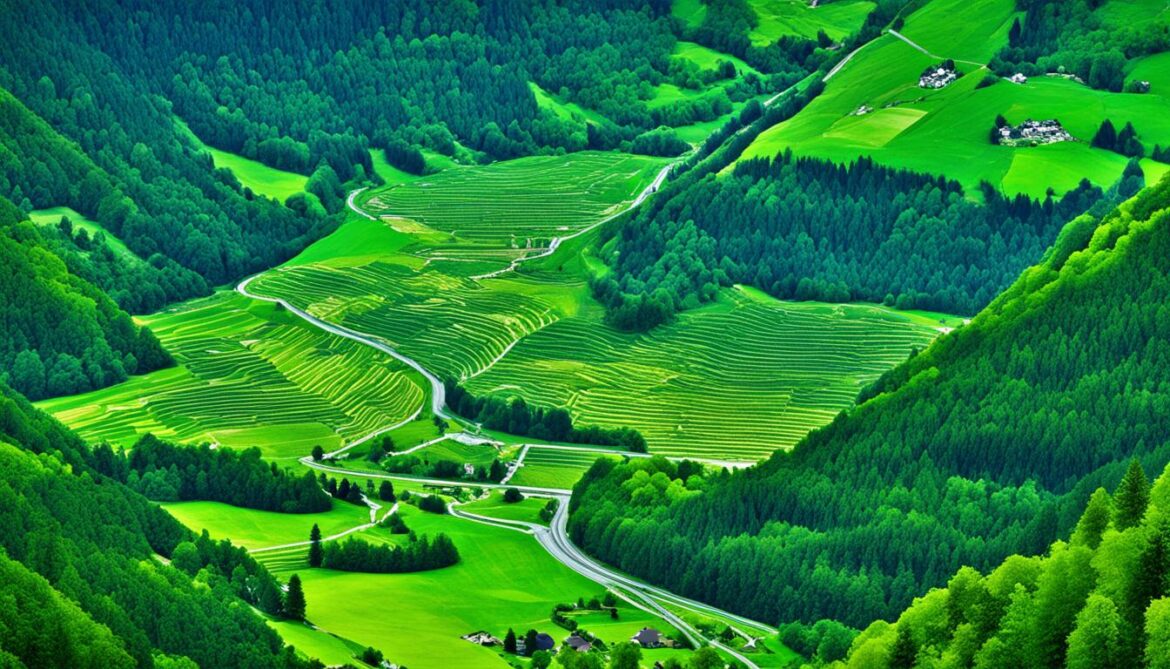
The Importance of Protection Areas
“Protection areas are essential for the conservation of Liechtenstein’s unique biodiversity. They offer safe havens for threatened species and support the long-term ecological sustainability of the country’s landscapes.” – Environmental Conservation Society of Liechtenstein
The establishment of various protection areas in Liechtenstein is a testament to the country’s commitment to preserving its natural heritage. These areas play a critical role in safeguarding habitats, promoting the conservation of endangered species, and maintaining the ecological balance of diverse ecosystems. By designating specific regions for protection, Liechtenstein demonstrates its dedication to environmental stewardship and the sustainable preservation of its natural resources.
Threats to Biodiversity in Liechtenstein
Liechtenstein’s rich biodiversity is facing several threats that require urgent attention and conservation efforts. The main challenges include the abandonment of use, infrastructure development, intensification of agriculture, settlement expansion, urban sprawl, and the impact of climate change. These threats endanger the delicate balance of ecosystems and put vulnerable plant and animal species at risk.
Abandonment of Use and Fallowing of Marginal Yield Areas
The abandonment of agricultural land and the subsequent fallowing of marginal yield areas pose significant threats to biodiversity in Liechtenstein. As farming practices decline in certain regions, the loss of traditional land management techniques can lead to the decline or disappearance of habitats that support diverse flora and fauna.
Infrastructure Development
The rapid pace of infrastructure development in Liechtenstein poses a significant threat to biodiversity. The construction of roads, buildings, and other infrastructure projects can result in the fragmentation and destruction of natural habitats. This fragmentation disrupts the movement and genetic exchange of plants and animals, reducing their ability to adapt to changing environmental conditions and increasing their vulnerability to local extinction.
“Infrastructure development in Liechtenstein disrupts the movement and genetic exchange of plants and animals, increasing their vulnerability to local extinction.”
Intensification of Agriculture
The intensification of agriculture, driven by the need to increase food production, can have detrimental effects on biodiversity. The use of pesticides, synthetic fertilizers, and monoculture practices can lead to the loss of biodiversity in agricultural landscapes. The reduction in natural habitats such as hedgerows, meadows, and wetlands further compounds the problem, as these areas provide essential resources and habitats for many species.
Settlement Expansion and Urban Sprawl
The expansion of settlements and urban sprawl in Liechtenstein threatens biodiversity, particularly in areas that were once characterized by high-stem fruit orchards. The conversion of agricultural land into residential and commercial areas results in the loss of valuable habitats and reduces the availability of food sources for pollinators, such as bees and butterflies.
Climate Change
Climate change poses significant challenges to biodiversity in Liechtenstein. The expected changes in hydrology, including shifts in precipitation patterns and water availability, can disrupt aquatic ecosystems and affect the distribution of species. Rising temperatures may also lead to the range shifts of plant and animal species, potentially forcing some species out of their preferred habitats.
Combating these threats requires a multi-faceted approach that includes effective land-use planning, sustainable agriculture practices, biodiversity-friendly infrastructure design, and conservation initiatives. By addressing these challenges and promoting sustainable practices, Liechtenstein can safeguard its unique biodiversity for future generations to enjoy.

Conservation Measures in Liechtenstein
Liechtenstein has made significant efforts to protect and conserve its biodiversity through a comprehensive National Biodiversity Strategy and Action Plan. The strategy sets specific goals for habitat conservation, species conservation, landscape conservation, and the integration of nature into the utilized landscape.
Near-natural silviculture is one of the key conservation measures implemented in Liechtenstein. This forestry practice prioritizes sustainable methods that mimic natural processes, promoting the development and maintenance of diverse forest ecosystems. By minimizing human intervention and focusing on ecological processes, near-natural silviculture helps enhance biodiversity and ensures the long-term vitality of the forests.
The establishment of forest reserves is another crucial measure employed in Liechtenstein for biodiversity conservation. These protected areas provide undisturbed habitats for a wide range of plant and animal species, safeguarding their natural processes and supporting their population stability. Forest reserves play a vital role in preserving critical ecosystems and contributing to the overall biodiversity of the country.
Additionally, Liechtenstein promotes the adoption of sustainable farming methods to minimize the impact on biodiversity. These methods prioritize environmentally friendly practices such as organic farming and the reduced use of chemical inputs. By implementing sustainable farming techniques, Liechtenstein strives to support healthier ecosystems, protect soil quality, and preserve the diverse array of species that depend on agricultural landscapes.
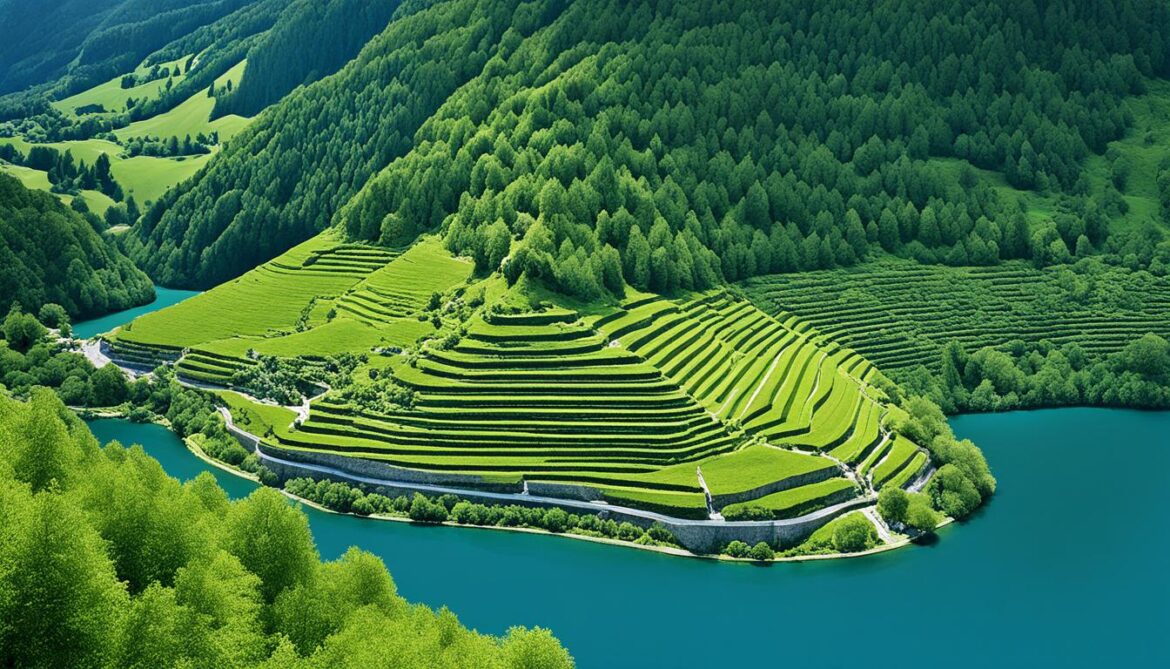
Biodiversity Conservation Efforts in Liechtenstein – A Snapshot
| Conservation Measures |
Description |
| National Biodiversity Strategy |
A comprehensive strategy that guides Liechtenstein’s conservation efforts, emphasizing habitat and species conservation, landscape protection, and incorporating nature into utilized landscapes. |
| Near-natural Silviculture |
A sustainable forestry practice that imitates natural processes to promote biodiversity and ensure the long-term vitality of forests. |
| Forest Reserves |
Protected areas dedicated to conserving undisturbed habitats and supporting a wide range of plant and animal species. |
| Sustainable Farming Methods |
Encouraging environmentally friendly agricultural practices, such as organic farming and reduced chemical inputs, to minimize the impact on biodiversity. |
Through these conservation measures and their ongoing commitment to sustainability, Liechtenstein is actively contributing to the protection and preservation of its unique biodiversity.
International Cooperation for Biodiversity Conservation
Despite its small size, Liechtenstein actively engages in international cooperation to promote and protect biodiversity. The country recognizes the importance of collaboration and provides both financial and practical support within the framework of multilateral and regional cooperation.
Liechtenstein works closely with neighboring countries Switzerland and Austria on various biodiversity conservation initiatives. Together, they exchange expertise, share best practices, and coordinate efforts to address common challenges. By leveraging their collective resources and knowledge, these countries can achieve greater impact in preserving and enhancing biodiversity.
“International cooperation plays a crucial role in addressing global environmental challenges. By working together, we can pool our resources, share expertise, and amplify our efforts to protect and conserve biodiversity.” – Heidi Hanselmann, Minister of Environment, Liechtenstein
In addition to bilateral cooperation, Liechtenstein actively participates in international bodies such as the European Free Trade Association (EFTA) Working Group on the Environment and the European Environment Agency. Through these platforms, Liechtenstein contributes to policy discussions and shares its experiences in biodiversity conservation, while also learning from the practices of other countries.
Furthermore, Liechtenstein is committed to development cooperation in rural regions of focus countries. The country supports sustainable farming methods and provides technical assistance to improve rural development and food security. By sharing its expertise in agriculture and promoting sustainable practices, Liechtenstein aims to empower communities and enhance their resilience to environmental challenges.
Benefits of International Cooperation
International cooperation offers numerous benefits for Liechtenstein’s biodiversity conservation efforts. It provides opportunities for knowledge exchange, capacity building, and the development of innovative solutions. Through collaboration, countries can learn from each other’s experiences and implement effective strategies to protect and restore ecosystems.
Furthermore, international cooperation enables the pooling of financial resources, which can be used to support conservation projects and initiatives. By leveraging funding from various sources, countries can implement large-scale biodiversity conservation programs that would be challenging to undertake individually.
Collaborative approaches also promote the sharing of data, research findings, and best practices. This exchange of information allows countries to learn from each other’s successes and challenges, facilitating evidence-based decision-making and the development of effective conservation policies and strategies.
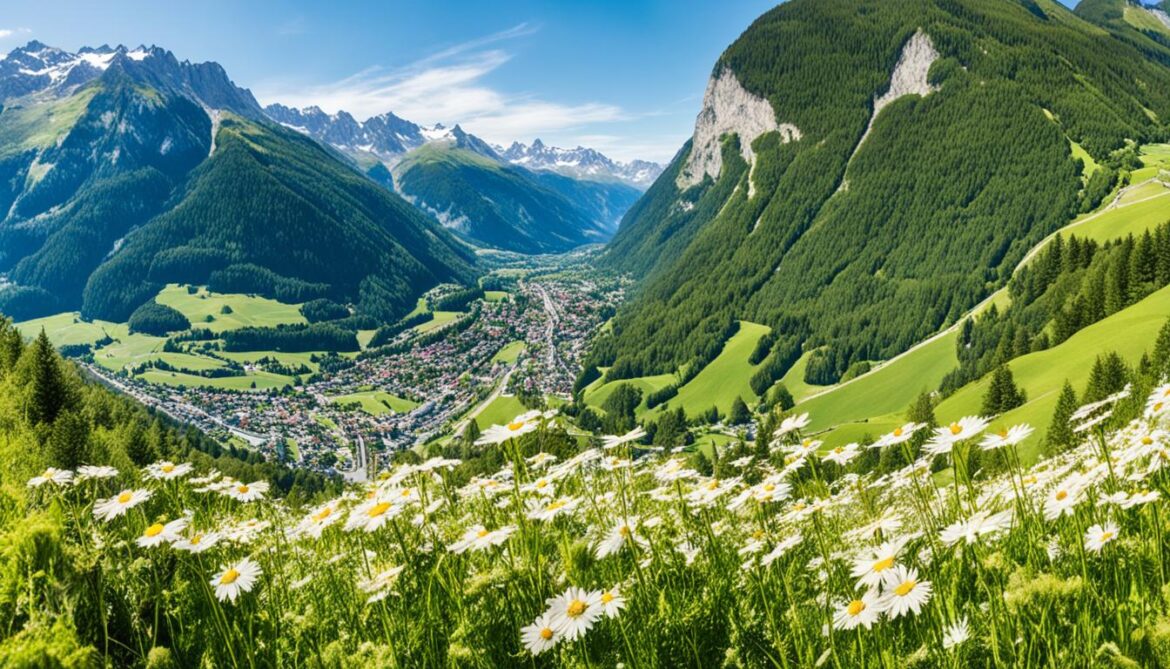
International cooperation not only benefits Liechtenstein but also contributes to global efforts in biodiversity conservation. By working together, countries can collectively address transboundary conservation issues, protect shared ecosystems, and safeguard the planet’s natural heritage for future generations.
Education and Public Outreach
Liechtenstein recognizes the significance of education in fostering environmental awareness and promoting sustainable development. As part of its mandatory school curriculum, the country emphasizes nature and environmental education. Students are provided with valuable insights and knowledge through the subject “Humans and Environment”. This curriculum equips them with the understanding needed to appreciate and protect the natural world around them.
Additionally, Liechtenstein actively engages in public outreach initiatives that aim to raise awareness and encourage responsible behavior towards nature and the environment. These initiatives include annual forest tours, where participants can explore and learn about the diverse ecosystems found in the country. The environmental commission also organizes various actions and events to promote conservation efforts.
To further disseminate information on the importance of environmental protection, Liechtenstein utilizes media reports to reach a wider audience. These reports highlight ongoing conservation projects, biodiversity preservation measures, and success stories in the field of environmental protection. By sharing these stories, Liechtenstein endeavors to inspire individuals, communities, and organizations to actively participate in safeguarding the environment.
| Education and Public Outreach Initiatives |
Objective |
| Annual forest tours |
Provide guided tours to educate the public about the country’s diverse ecosystems and wildlife. |
| Environmental commission actions |
Organize events and initiatives that promote environmental conservation and sustainability. |
| Media reports |
Share success stories, ongoing projects, and the importance of nature conservation to raise awareness among the general public. |
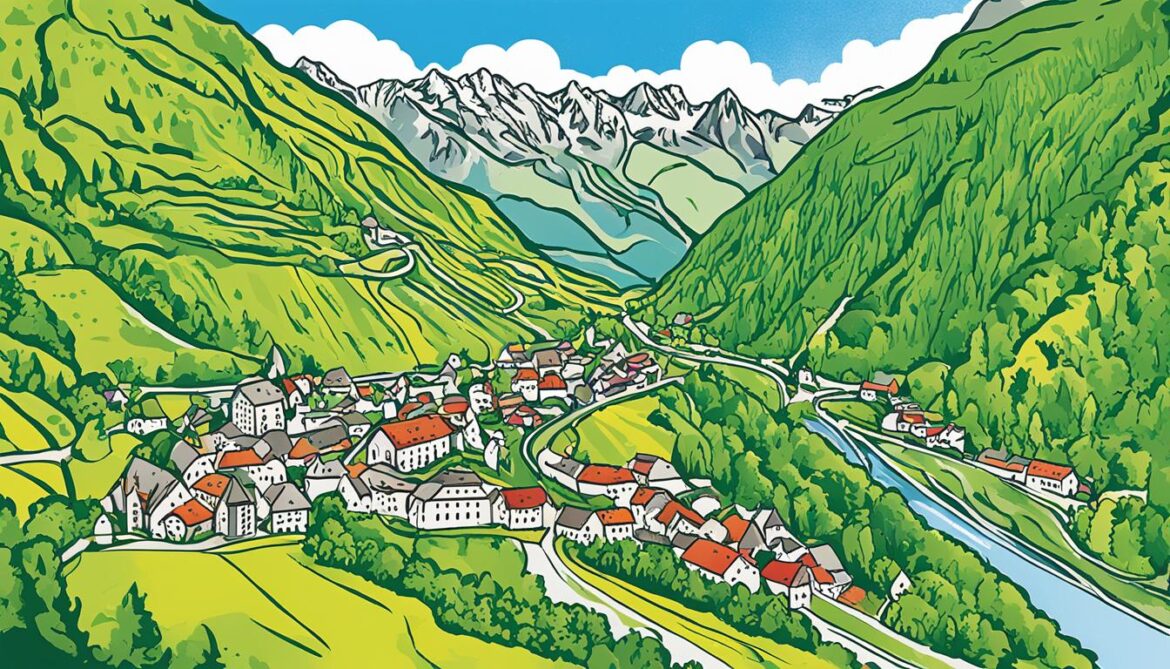
The Impact of Education and Outreach
By prioritizing education and public outreach, Liechtenstein hopes to create a sustainable and environmentally conscious society. The integration of nature and environmental education in the school curriculum equips future generations with the knowledge and skills needed to make informed decisions that positively impact the environment.
Through public outreach initiatives, Liechtenstein aims to foster a sense of responsibility and encourage individuals to adopt sustainable practices in their daily lives. By engaging with the public and sharing success stories through media reports, the country strives to inspire collective action towards nature conservation.
“Education is the most powerful weapon which you can use to change the world.” – Nelson Mandela
Legislation and Protection Mechanisms
Liechtenstein has implemented comprehensive legislation and protection mechanisms to safeguard its rich biodiversity. These measures ensure the conservation and restoration of essential habitats for the diverse flora and fauna found within the country.
The cornerstone of Liechtenstein’s conservation efforts is the Law on the Protection of Nature and Landscape. This legislation sets the ambitious goal of preserving and enhancing critical habitats, allowing them to thrive and support a healthy ecosystem.
In addition to the Law on the Protection of Nature and Landscape, Liechtenstein has enacted other key laws aimed at addressing specific aspects of biodiversity conservation. The Forestry Act focuses on sustainable forest management practices, while the Water Protection Act ensures the safeguarding of aquatic ecosystems and resources. The Fishery Act protects fish populations and their habitats, while the Agriculture Act promotes responsible farming methods that minimize negative impacts on biodiversity.
To effectively implement these laws and conservation strategies, Liechtenstein utilizes a range of protection mechanisms and instruments. Inventories are maintained to monitor and assess the status of various species and habitats, providing important data for conservation planning. Liechtenstein also develops Red Lists, which classify the threat level to different animal and plant species based on internationally recognized criteria.
Protection areas are another crucial component of Liechtenstein’s conservation efforts. These areas serve as havens for vulnerable flora and fauna, preventing habitat destruction and ensuring the long-term survival of key species. Liechtenstein has established a network of nature protection areas, forest protection areas, plant protection areas, and landscape protection areas to conserve and sustainably manage its natural values.
| Liechtenstein Legislation and Protection Mechanisms |
Description |
| Law on the Protection of Nature and Landscape |
An ambitious legislation that aims to protect and restore critical habitats. |
| Forestry Act |
Focuses on sustainable forest management practices. |
| Water Protection Act |
Ensures the safeguarding of aquatic ecosystems and resources. |
| Fishery Act |
Protects fish populations and their habitats. |
| Agriculture Act |
Promotes responsible farming methods that minimize negative impacts on biodiversity. |
Through these legislation and protection mechanisms, Liechtenstein is fully committed to preserving its natural heritage and ensuring the protection of its diverse plant and animal species for future generations.
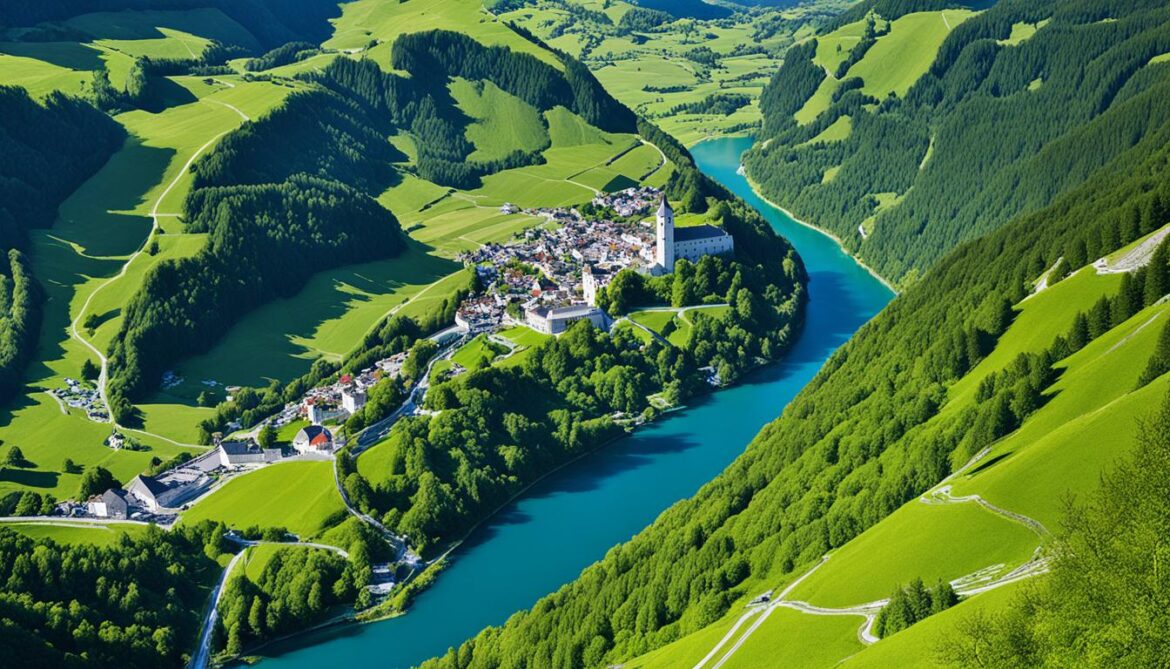
Conclusion
Liechtenstein’s rich biodiversity and sacred natural sites face a range of challenges, including abandonment of use, infrastructure development, and intensification of agriculture. However, the country has taken significant steps towards biodiversity conservation and sustainability.
With the implementation of a National Biodiversity Strategy, Liechtenstein has outlined a clear roadmap for protecting its natural heritage. The establishment of various protection areas, such as nature protection areas and forest reserves, demonstrates the commitment to safeguarding habitats for threatened species.
Moreover, Liechtenstein’s focus on sustainable farming methods promotes responsible land use and reduces the negative impact on biodiversity. The country also actively engages in international cooperation, regional collaboration, and development projects to support conservation efforts both within its borders and beyond.
Through education and public outreach initiatives, Liechtenstein aims to raise awareness and instill a sense of responsibility towards nature and the environment. By addressing the conservation challenges and promoting sustainable practices, Liechtenstein is dedicated to preserving its sacred natural sites and nurturing its rich biodiversity for the benefit of future generations.
FAQ
What is the geography of Liechtenstein?
Liechtenstein is located between Switzerland and Austria and is known for its diverse landscape, including the Alpine Rhine and Rätikon massif. It is divided into three physical regions: the Rhine Valley plain, the Rhine Valley slopes, and the mountain region.
What is the climate like in Liechtenstein?
Liechtenstein’s climate is in the transition zone between oceanic and continental climates. The country receives approximately 1,000 mm of precipitation each year in Vaduz.
What is the biodiversity like in Liechtenstein?
Liechtenstein has a rich biodiversity due to its unique geography and climate. It is home to diverse fauna and flora, and the country maintains its own Red Lists to assess the threat level to animal and plant species.
What are the protection areas in Liechtenstein?
Liechtenstein has four categories of protection areas: nature protection area, forest protection areas, plant protection area, and landscape protection area. These areas aim to conserve habitats for threatened animal and plant species.
What are the threats to biodiversity in Liechtenstein?
Biodiversity in Liechtenstein faces threats from abandonment of use, infrastructure development, and intensification of agriculture. These challenges can lead to habitat loss and fragmentation, as well as the risk of climate change.
What conservation measures are implemented in Liechtenstein?
Liechtenstein has developed a National Biodiversity Strategy and implements measures such as near-natural silviculture, forest reserves, and sustainable farming methods to address the threats to biodiversity.
Does Liechtenstein engage in international cooperation for biodiversity conservation?
Yes, Liechtenstein engages in international cooperation for biodiversity conservation and provides support within the framework of multilateral and regional cooperation. The country also works closely with neighboring countries and participates in international bodies and agencies.
How does Liechtenstein promote education and public outreach for biodiversity conservation?
Liechtenstein promotes nature and environmental education in its mandatory school curriculum and conducts public outreach initiatives such as forest tours, environmental commission actions, and media reports to raise awareness and promote responsible behavior towards nature and the environment.
What legislation and protection mechanisms are in place in Liechtenstein for biodiversity conservation?
Liechtenstein has legislation such as the Law on the Protection of Nature and Landscape, Forestry Act, and Water Protection Act, as well as various protection mechanisms including inventories, Red Lists, and protection areas to safeguard its biodiversity.
What is the conclusion of biodiversity conservation in Liechtenstein?
Liechtenstein faces both challenges and conservation efforts in preserving its sacred natural sites and biodiversity. The country has implemented measures and strategies, engages in international cooperation, and promotes education and public outreach to protect and conserve its unique natural heritage.
Source Links

























Post comments (0)